In 1987, when Apple released the Macintosh SE, it represented the cutting edge of personal computing. With its compact all-in-one design, built-in hard drive capability, and that iconic beige case, the Mac SE was the computer many of us dreamed of owning but could never quite afford. For me, that dream lingered for decades.
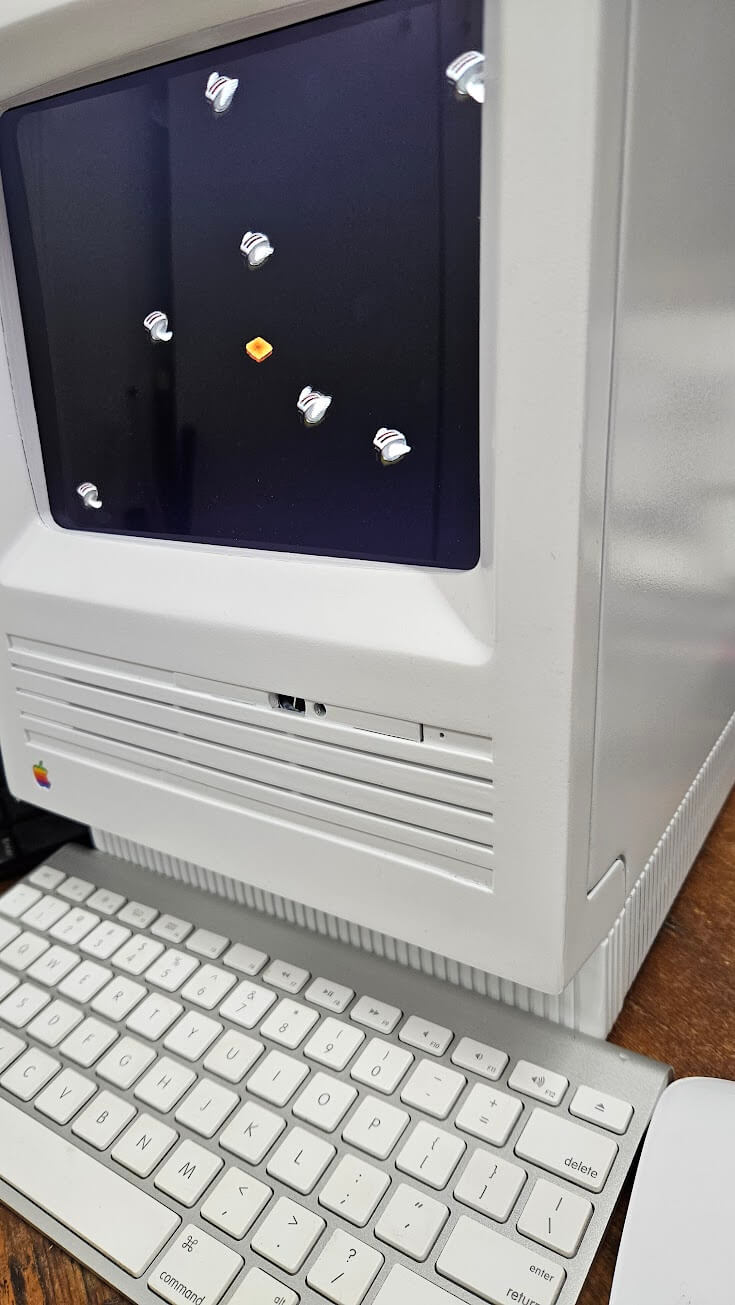
It wasn't until 2010 that fate intervened in the form of a garage sale. There it was, an empty Mac SE case, specifically the M5011 "SuperDrive" model from 1987. This wasn't just any Mac SE; it was the premium version that came with dual floppy drives, one meg of RAM and a 20MB SCSI hard drive, covered in house paint by a previous owner who had envisioned this classic machine as an aquarium. At $10, it was an easy purchase, even if I wasn't entirely sure what I'd do with it, I knew I had to have it. That case found its way to my garage, where it would wait patiently for another 15 years.

Fast forward to 2025, and that forgotten garage sale treasure finally got the attention it deserved. The first step was to undo the previous owner's disastrous paint job and start fresh. After carefully stripping away the old paint, I gave the case a new lease of life with several coats of glossy white spray paint and a final coat of clear. I was lucky to find the Mac's model and specs sticker still intact under the paint. I wanted to maintain that classic Mac aesthetic while giving it a high-quality modern finish.

But this wouldn't be just a cosmetic restoration. This Mac SE was destined to become something entirely new: a retromod that would blend 1987's iconic design with 2025's computing power.
The transformation required careful planning and no small amount of custom fabrication. The original Mac SE had a 9-inch monochrome CRT screen; where that once sat, a vibrant flat 9.7-inch colour LCD screen was installed, bringing modern visual capabilities to the classic form factor. Custom 3D-printed brackets and bezel ensure the new display fits perfectly within the original case dimensions, maintaining the SE's distinctive proportions.

The rear of the case received a complete overhaul with a custom 3D-printed I/O connector panel, providing all the modern connectivity options you'd expect from a contemporary computer while maintaining the clean, minimalist aesthetic that made the Mac SE so appealing in the first place.
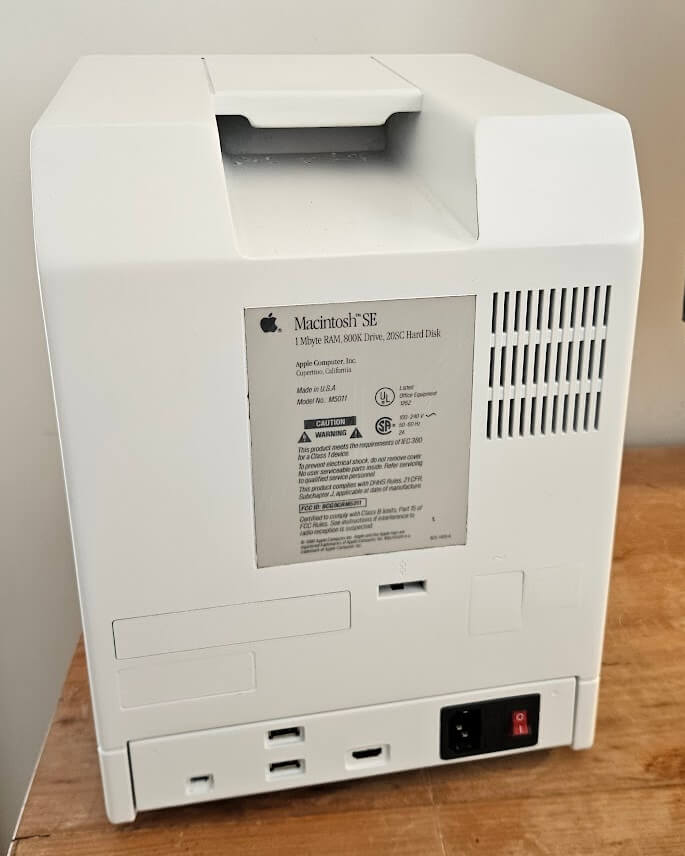
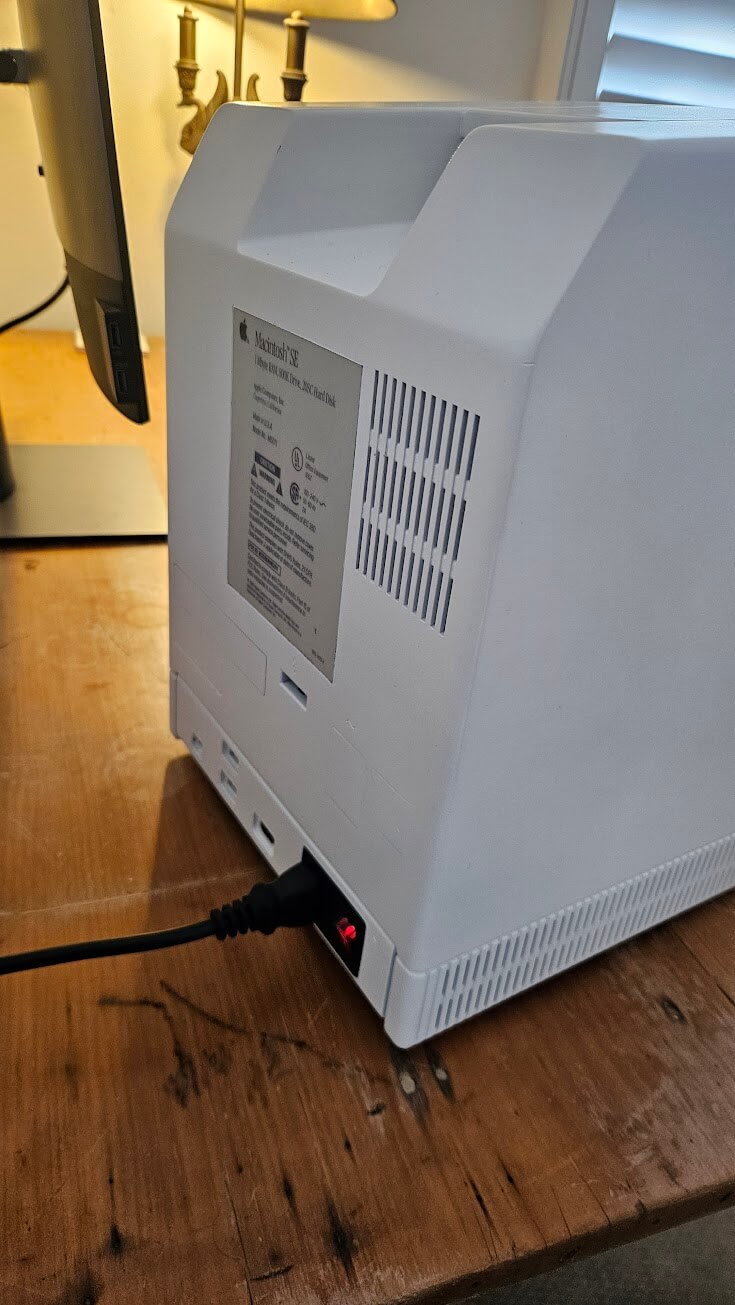
Audio got a significant upgrade, too. Where the original Mac SE had a simple internal speaker, this retromod features proper stereo speakers, bringing modern audio capabilities to the classic design. The sound quality is impressive, from the SE's original basic beeps, chirps and system sounds to full stereo audio capable of handling everything from music to video calls.
I didn't have the original keyboard or mouse, so I paired the SE with a sleek modern Apple keyboard and magic mouse.
One of the most interesting aspects of this build is the repurposing of the original floppy disk slot. Where 3.5-inch diskettes once provided the primary means of data transfer, a 5MP webcam and microphone now reside in a 3D-printed enclosure. It's a perfect example of how modern functionality can be seamlessly integrated into vintage design. The slot that once connected us to the digital world through physical media now connects us through video calls and streaming.
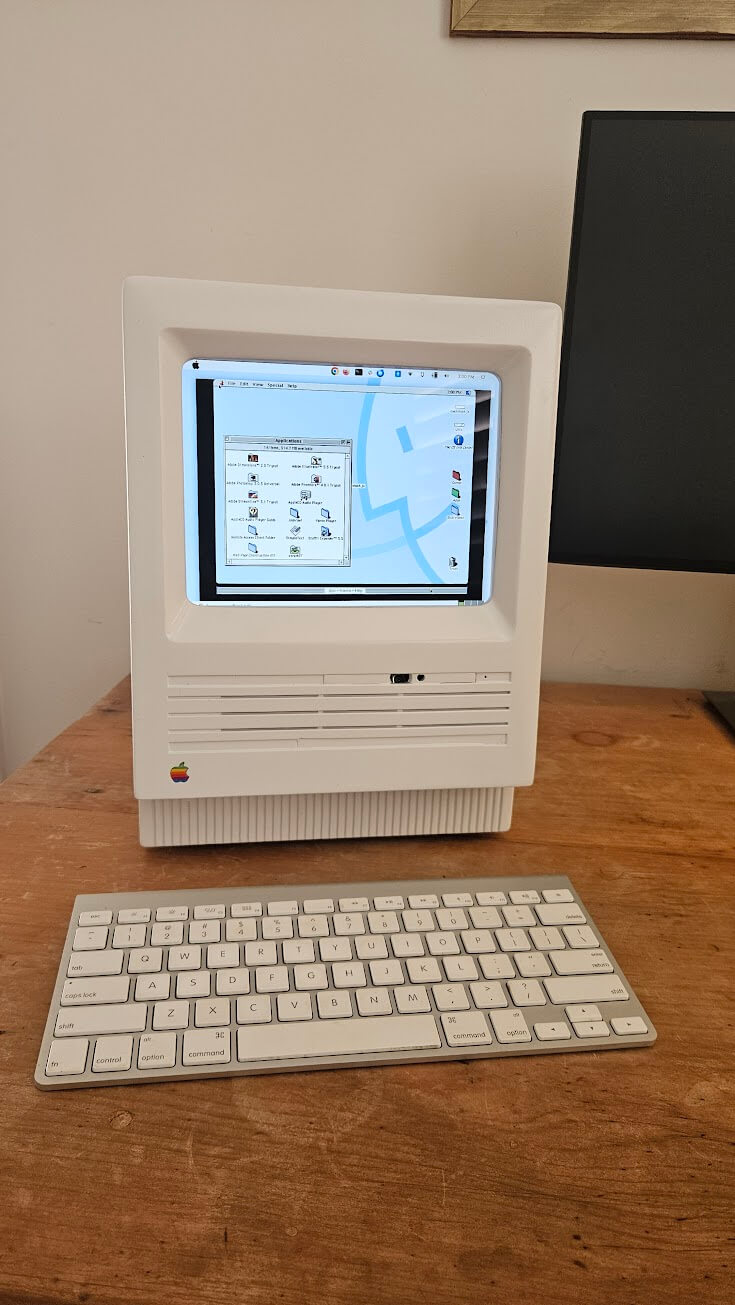
The heart of this retromod is the motherboard from an Intel Core i7 Dell XPS laptop, generously donated after a catastrophic screen accident in a data centre, providing computing power that would have been unimaginable in 1987. This isn't just a nostalgic display piece; it's a fully functional modern computer that can handle contemporary tasks with ease.
Running Ubuntu Mate proves to be an inspired choice for this build. The Linux distribution's focus on traditional desktop paradigms and efficiency makes it ideal for both the hardware capabilities and the retro aesthetic. Ubuntu Mate provides a modern, highly customisable computing experience while respecting the classic desktop metaphors that made the original Mac SE so intuitive to use.
The operating system runs smoothly on the laptop hardware, proving that this retromod isn't just about looks; it's a genuinely capable machine that serves as my daily driver for many computing tasks. To push the boundaries even further, I've installed OpenAI's Whisper speech recognition system. There's something wonderfully surreal about speaking to what appears to be a 1987 computer and watching it transcribe your words with modern AI accuracy. The combination of the built-in webcam and microphone makes this a seamless experience; the Phoenix can listen, understand, and respond in ways that would have seemed like pure science fiction in 1987.
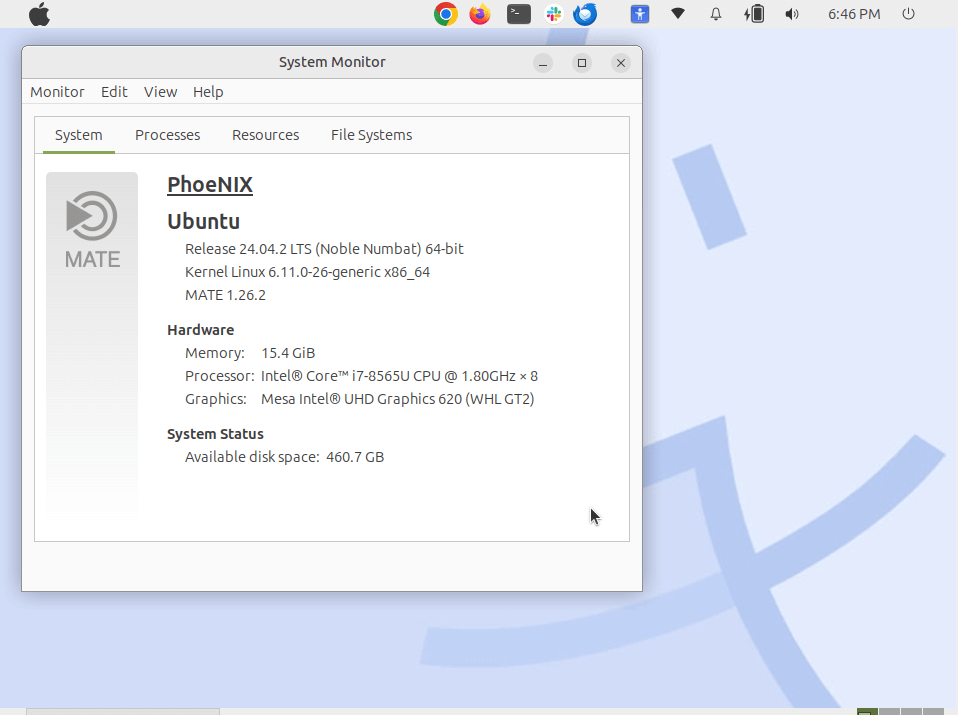
It's not quite as portable as a laptop, but it's very lightweight and features a convenient carry handle built in.
What makes the Phoenix special isn't just the technical achievement of fitting modern components into a vintage case. It's the story of patience, creativity, and the enduring appeal of great design. The Mac SE's form factor has proven timeless. Almost four decades later, that compact all-in-one design still looks purposeful and elegant. This retromod represents something unique in the world of vintage computing restoration. Rather than preserving the original functionality, the Phoenix preserves what really mattered about the Mac SE: its design, its presence, and its role as a capable desktop computer.

Projects like this Mac SE retromod point to an interesting future for vintage computing enthusiasts. As original hardware becomes scarce, thoughtful modernisation projects can preserve the aesthetic and emotional connection to classic computers while providing genuine utility and reducing e-waste.
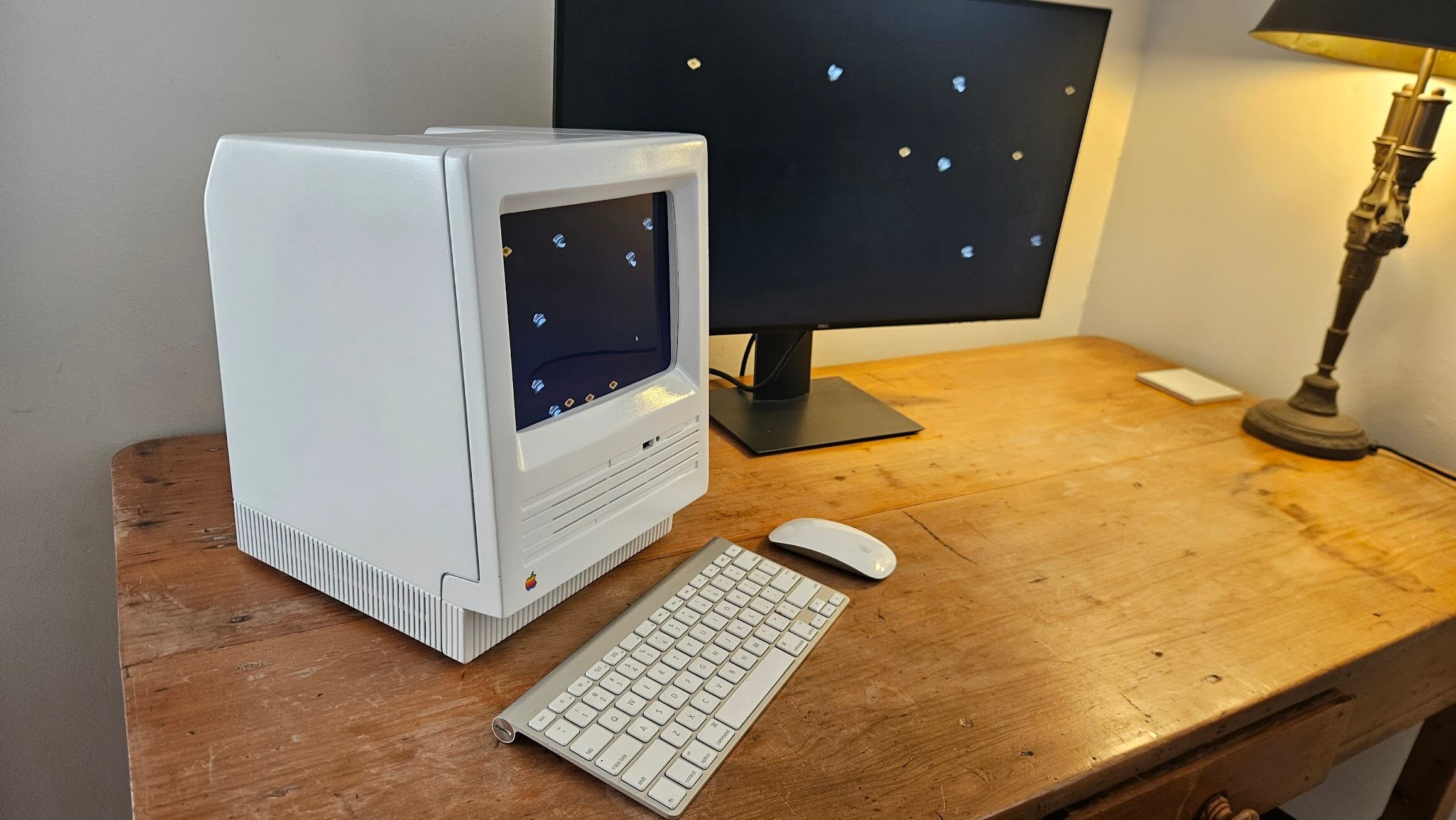
For those of you who find a classic Mac in the attic or garage, I encourage you to find somebody to restore it. However, if it's just a shell or beyond repair, then a retromod project like this is only limited by your imagination and how much tech you can cram in the case.
The result is a machine that honours its 1987 heritage while offering 2025 capabilities. A true fusion of past and future that proves great design is truly timeless. I call it the PhoeNIX, and the name couldn't be more fitting. Like the mythical bird that rises from its own ashes, this Mac SE has been reborn from what was essentially an empty shell into something far more powerful and more useful than its original incarnation.
From a $10 garage sale find to the Phoenix, a fully functional modern computer. This Mac SE has completed a journey that took 38 years. Sometimes the best projects are worth the wait, and I have enjoyed every minute of it.

Let's see what I do with that Classic Mac 512K shell sitting in my garage!
